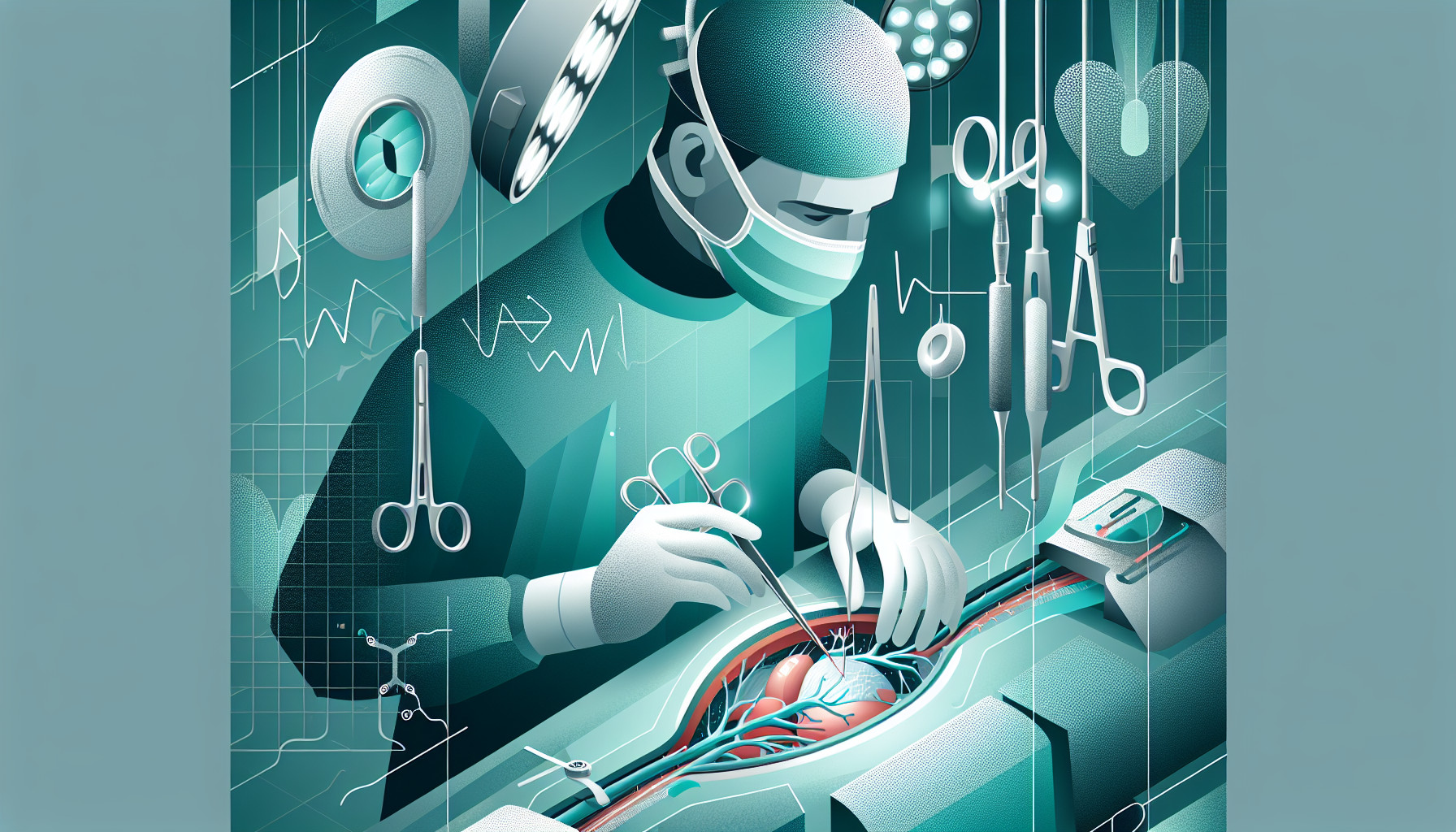Our Summary
This research paper discusses a crucial part of hemodialysis therapy, a treatment commonly used for kidney failure. This involves creating an arteriovenous fistula, a connection between an artery and a vein, which is typically done through surgery. However, two new systems have been developed that can create this connection in a less invasive way, using a procedure known as percutaneous or endovascular creation. The paper reviews experiences with these two new systems, WavelinQ and Ellipsys, and discusses their pros and cons.
FAQs
- What is an arteriovenous fistula and why is it essential for hemodialysis therapy?
- What are the newly developed systems for percutaneous/endovascular creation of an arteriovenous fistula?
- What are the advantages and disadvantages of using the WavelinQ and Ellipsys systems for creating an arteriovenous fistula?
Doctor’s Tip
One helpful tip a doctor might tell a patient about AV fistula creation is to keep the access site clean and dry to prevent infection. It is important to follow proper wound care instructions provided by your healthcare provider to ensure the AV fistula remains healthy and functioning properly.
Suitable For
Patients with end-stage renal disease who require hemodialysis are typically recommended AV fistula creation. This includes patients with chronic kidney disease, renal failure, or other conditions that require regular dialysis treatment. AV fistulas are preferred over other forms of vascular access, such as AV grafts or central venous catheters, due to their long-term durability and lower risk of infection and complications. Patients who are suitable candidates for AV fistula creation are those with adequate blood vessels for the procedure and good overall health to tolerate the surgery and subsequent dialysis treatments.
Timeline
Before AV fistula creation:
- Patient undergoes initial evaluation for hemodialysis and vascular access options.
- Patient may undergo imaging studies to assess the suitability of blood vessels for AV fistula creation.
- Surgical consultation is scheduled to discuss the procedure and potential risks.
- Consent for the procedure is obtained from the patient.
- Pre-operative instructions are provided to the patient, including fasting guidelines.
After AV fistula creation:
- Patient undergoes the AV fistula creation procedure, either through traditional surgical techniques or percutaneous/endovascular methods.
- Post-operative care involves monitoring for complications such as infection or bleeding.
- Patient is instructed on care and maintenance of the AV fistula, including exercises to promote maturation.
- Follow-up appointments are scheduled to assess the function and viability of the AV fistula.
- Patient begins hemodialysis treatments using the newly created AV fistula for vascular access.
What to Ask Your Doctor
Some questions a patient should ask their doctor about AV fistula creation include:
- What are the benefits and risks of undergoing AV fistula creation surgery?
- Are there alternative options to AV fistula creation, such as a graft or catheter?
- How long will the AV fistula take to mature and be ready for dialysis use?
- What are the potential complications or side effects associated with AV fistula creation?
- How often will I need to have the AV fistula checked or monitored after the surgery?
- Will I need to make any lifestyle changes or follow specific instructions to care for my AV fistula?
- How long can I expect the AV fistula to last before needing a revision or replacement?
- Are there any restrictions or limitations on activities I should be aware of after AV fistula creation?
- What is the success rate of AV fistula creation with the specific system being used (WavelinQ or Ellipsys)?
- Are there any specific considerations or factors that may affect my eligibility for AV fistula creation, such as underlying health conditions or anatomy?
Reference
Authors: Mallios A, Malik J, Jennings WC. Journal: Diagnostics (Basel). 2022 Oct 10;12(10):2447. doi: 10.3390/diagnostics12102447. PMID: 36292137
